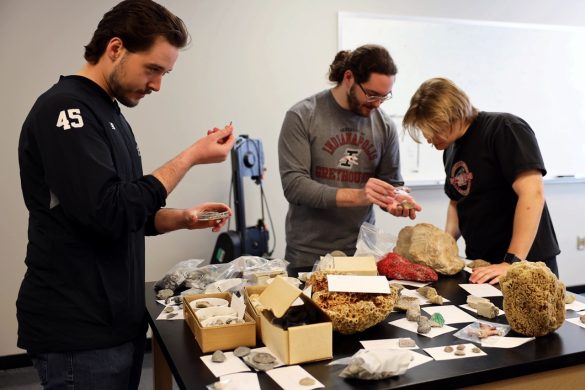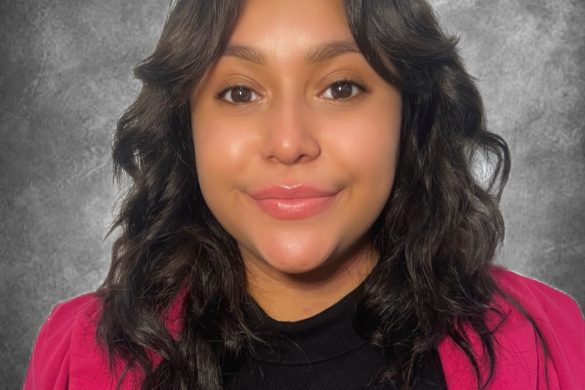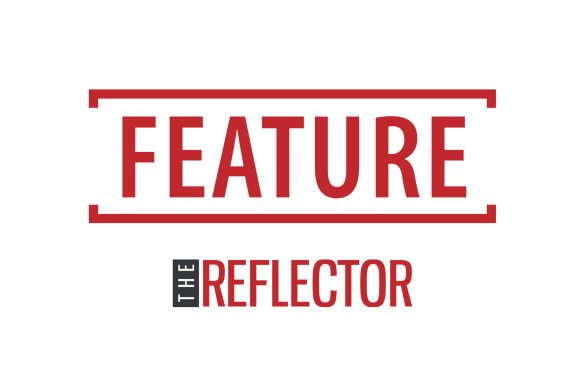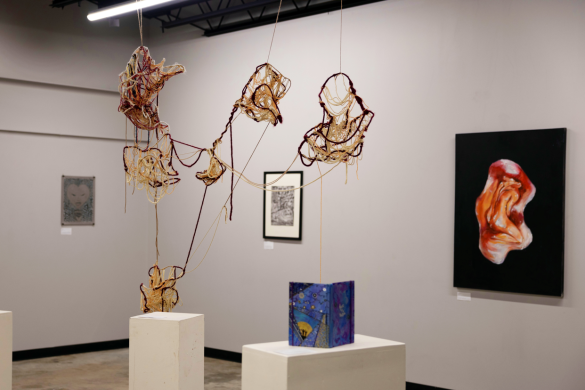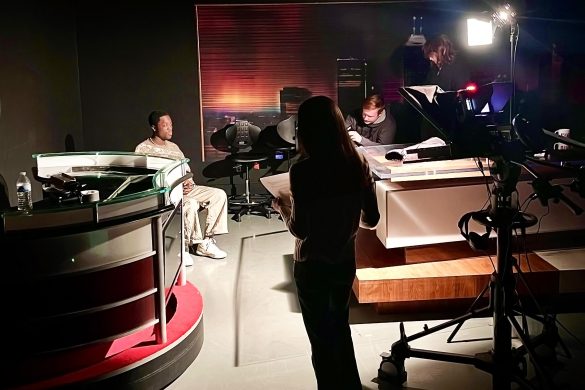Statistics show that women are underrepresented in science, technology, engineering and mathematics. According to the National Girls Collaborative Project, only 39 percent of chemists and material scientists, 12.1 percent of civil engineers and 8.3 percent of electrical and electronics engineers are women. The statistics for mathematics are not much better, as only 43.1 percent of bachelor degrees in math and statistics go to women, the NGC Project reports.
According to the Girl Scout Research Institute, studies show that girls lose interest in STEM programs during middle school, even if they show a strong interest during elementary school. However, these statistics did not apply to Associate Professor of Mathematics Krystina Leganza and Professor of Biology Sandra Davis.
Leganza’s love of math began as a five year old, when she was in the hospital after heart surgery. Leganza said to pass the time, her father would practice math with her.
“He always presented it as fun and a game,” she said. “And so I thought it was fun. And then when I was in second grade, I decided I wanted to be a high school math teacher.”
Leganza said during her second year of college, she decided against teaching math at a high school, but chose instead to teach math at colleges. She said that she loves teaching, especially when she sees that her students really understand the lesson, and that math has a beautiful element to it, too.
“I just think math is so fun and beautiful,” she said. “And it’s not presented that way, especially to elementary and middle school kids. They need to see it’s more than just numbers. It’s the patterns and the beauty of it.”
Davis also was drawn to math and science as a child, and she was never discouraged from pursuing the subjects. When she attended college, she realized how much she enjoyed biology.
“What was really influential for me was I ended up working in the lab of a female faculty member,” she said. “And so she hired me to first be a lab assistant, and then I started doing research for her lab, and then she ended up being my graduate advisor.”
For reimbursement for her tuition while she was in graduate school, Davis taught biology and realized how much she also enjoyed teaching. She said that getting experience in both the fields of biology and teaching was very important, and that the excitement for the subject is something a teacher needs to be successful.
“I really consider myself both a teacher and a biologist,” she said. “So I put a lot of importance on being a scientist who is also a teacher. So I think the two go hand-in-hand. I don’t think you can be a good teacher unless you enjoy the field that you are in.”
Davis said that what she loves most about biology is learning how all living organisms are connected.
The learning process and discovery is what drives senior biology major Catey Costello. Costello, who also has a minor in chemistry, said her passion for science was influenced by her high school teachers. She hopes after graduating this semester to go on to medical school to be a doctor, but said the many options that her biology major presents are exciting.
“With a bio major, you can do so many things with it and more than what I would have initially thought,” she said. “And you can go very big picture or you can get very specific in a certain area. And I think that’s really cool, that the scientists kind of have that option.”
Senior computer science major Paula Romero is another student who has defied statistics by pursuing a field in STEM. Romero, who also minors in physics, was influenced by her engineer father, computer scientist mother and physicist brother. Although Romero considered going into other fields, such as journalism or philosophy, she said the computer science major suits her personality, and she loves the complexity that goes on behind the screens of computers.
“Looking precisely at computer science, I think what drives me about it is that when I’m working, when I’m coding, I don’t have to worry about what everyone else thinks that I should be doing,” she said.
Romero will have all of her course credits in December but will continue to be a student and work at an internship during the spring semester. She also is looking into product management as a possible career choice.
Leganza said that part of the reason why girls may become disinterested in math is because middle school girls are desperate to fit in and make friends.
“I think too many people see math as a solitary activity,” Leganza said. “And a lot of middle school girls don’t want that, so they don’t see it in their future. And really, there’s a lot more collaboration in math than people realize.”
Costello also said that middle school girls are influenced by their peers and teachers, and unless they are encouraged, they may lose interest in STEM.
“It’s kind of hard at that age to have your own individuality, when all you really want to do is make friends and stick with it,” she said.
Davis and Leganza said that girls may also feel pressure not to be seen as “geeky” or “nerdy” or “too smart.” Leganza and Davis also felt that more information should be spread about women in STEM programs and decided to co-teach the course Gender and Ethnicity in Math and Science (GEMS). The course fulfills the Local/Global — Experiential core credit and is a student-led discussion of women who have worked in the STEM fields. A topic is chosen each week, that students research on their own and then come back to class with their findings. The first half of the semester is spent on history, while the second half deals with more current issues. By the end of the semester, the entire class has contributed to a bibliography, and for the final project, groups of two or three will put together an outreach project outside of UIndy that is approved by Leganza and Davis. Leganza said one group of students helped some Girl Scout members earn their math and science badges while another group went to high schools and introduced women and minorities who worked in the STEM fields. Davis and Leganza said that all majors can take the course, and Leganza said males are encouraged to take it as well as females.
“It’s supposed to be eye-opening for everyone,” she said. “But we encourage men to take it, too, because they offer a different perspective. And then I say a lot of times they will become fathers or uncles or something and will have young girls in their lives that they need to influence. ”
Davis said she hopes that those who participate in GEMS will become more aware of social patterns that may affect girls’ goals.
“They may have unconsciously heard those messages that females don’t do science, but once you actually have your eyes open, and you see those social pressures, you can say, ‘I’m not going to bow to that,’ and hopefully that will change their attitudes a bit,” she said.
Leganza said she would like to see a program at UIndy that would encourage young women to stick with STEM for the long run, but in the meantime, she encourages people to do what they love.
“A lot of my students switch majors late, and they’re like, ‘I’m going to be here an extra year,’” Leganza said. “And I say, ‘I know the expense, but 10 to 20 years from now, it’s not going to matter if you were here four years or five years. It’s that you wake up every morning and go to a job you want.’”
Costello said she is optimistic about the future and encourages people to follow their passion and their dreams.
“Be ready for battle, just in case,” she said. “But I’m sure, especially with the changing world, the future looks very bright for female scientists.”
Davis said that in the long run, the lack of females in STEM will be a problem, and that females should not let the stigma hold them back either.
“Gender should not be any kind of deciding factor,” she said. “They have to sort of decide in themselves what it is that they want and if they want a career in science, then by all means, that’s what you should do.… There’s a concern in STEM that the lack of females in STEM hurts science, because the more diversity you have in the people doing science, the better science is, because you’re bringing in new viewpoints and new ideas.”
Romero said that while STEM is not dependent on women, it will be highly influenced by them, and everyone should go for whatever degrees and careers they are passionate about.
“If you don’t want to do STEM, that’s fine,” she said. “But if they have minimal interest in it, then they need to be told it is for them, that science and STEM degrees don’t have genders. And that if you are told as a woman that you cannot do something because you’re a girl, then … by continuing in your field [you] will prove to them that you can.”
